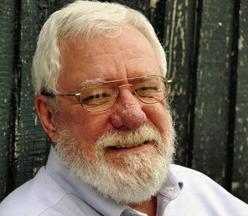The sale of red poppies on Memorial Day began almost immediately after the end of World War I, inspired by the poem “In Flanders Fields” by Lt. Col. John McCrae, a surgeon in the Canadian army. The poem was a reminder of the valor of the men and women who died in France in the “war to end all wars.”
The poem reads in part: In Flanders Fields the poppies blow Between the crosses row on row, That mark our place; and in the sky The larks, still bravely singing, fly Scarce heard among the guns below.
Those poppies of Flanders Fields became the inspiration for distribution of silk poppies on days of remembrance in the United States and in France and England. The American Legion and Veterans of Foreign Wars adopted their sale as national projects because, as recounted in several south Louisiana newspapers, “It was through fields of wheat and poppies that our troops charged at Vaux, Belleau Woods and Chateau-Thierry in June, July and August of 1918.” The flowers were sold for a dime in most communities where there were American Legion or VFW chapters, often by the women of the Legion auxiliary.
Besides promoting patriotism, the little boutonnières also had an important practical purpose. As the Ville Platte Gazette explained, millions of the silk flowers were brought from France to the United States by Anne F. Guerin, who came to be known as “The Poppy Lady.” She was the founder of the American and French Children’s League, “a growing movement which seeks not only to aid [war widows and orphans] of devastated France, but still more important, hopes to teach the children of both nations to remember and to foster the friendship which had its inception on a battle field.” Proceeds from the poppy sales went to the league.

Bradshaw
Bradshaw
Mme. Guerin established a reputation as a humanitarian both in her home country and in the United States before the war began. She was a prominent member of the Alliance Francaise, an international organization that aimed to promote the French language and francophone culture, and in 1914 began a series of lectures in the United States, which she continued despite the outbreak of the war. Her lectures promoted French ideals and raised money for French war causes. She also helped raise money for the U.S. after we entered the war and was described “as the greatest of all war speakers” during a tour to promote U.S. War Bonds.
After the war, members of the Children’s League made millions of “exact replicas of the poppy of Flanders field … to symbolize the spirit that sustained the victorious nations when the outcome of the conflict was in doubt.” The Crowley Signal suggested the poppy sales were “a cause which should touch every heart,” but unfortunately they did not touch every lapel.
The Poppy Lady brought millions of them to the United States, but they were also parceled out across the whole nation. Only 300 poppies were allotted to towns as large as Morgan City and Opelousas; smaller communities got even less. Just before Memorial Day 1921, for example, the Rice Belt Journal in Welsh said Mrs. J. W. Armstrong, who led the local campaign, “received only 150 of the red poppies … not nearly enough to go around.”
There were a few more poppies to be sold the next year, after Mme. Guerin visited England and inspired Major George Howson to employ disabled veterans in the first factory set up to make the fabric and paper flowers. In more recent times, those have been replaced by metal lapel pins available through veterans’ and other organizations.
You can contact Jim Bradshaw at jimbradshaw4321@ gmail.com or P.O. Box 1121, Washington LA 70589.

